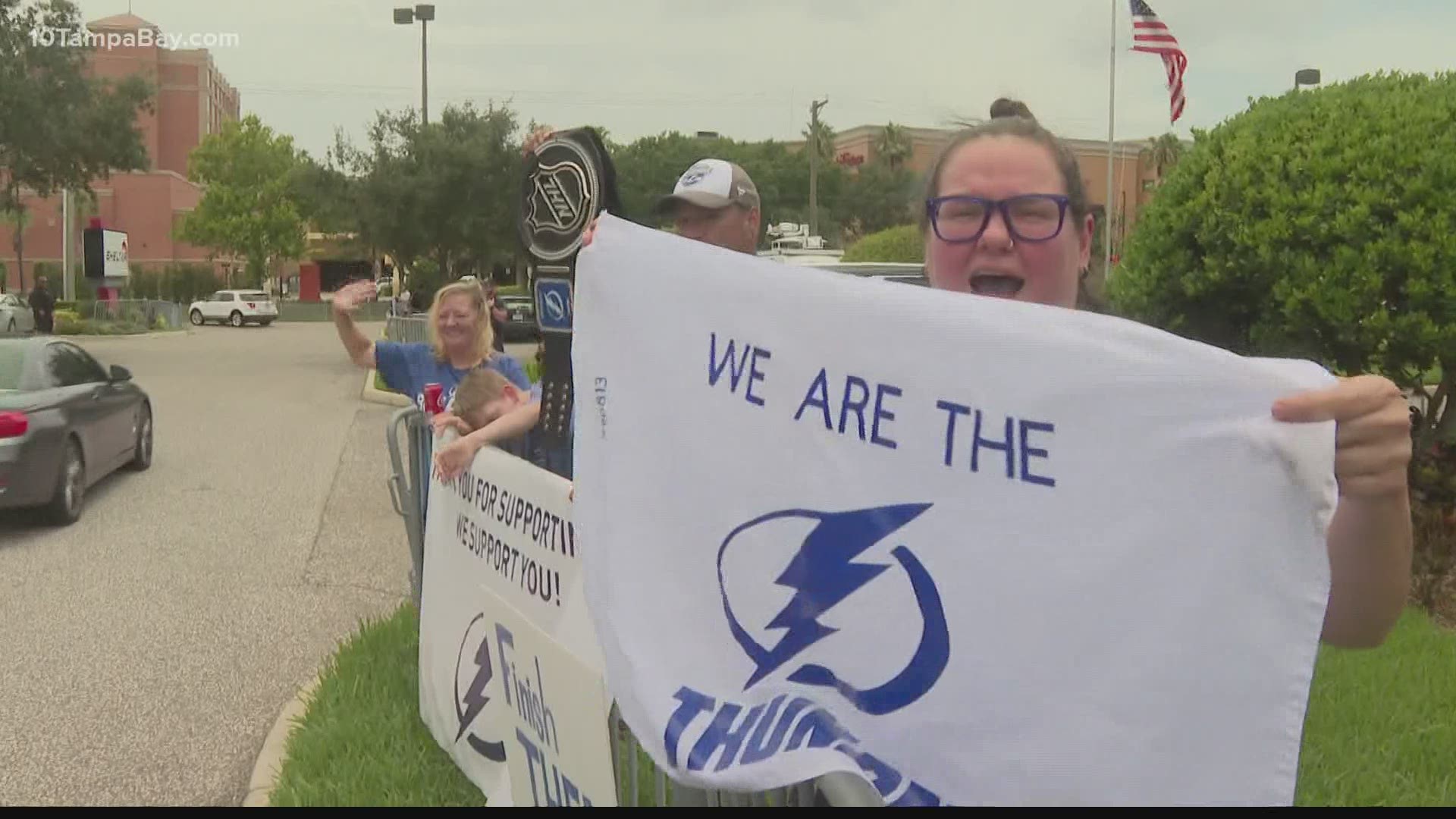TAMPA, Fla. — Editor's Note: The video above is from the Lightning's return Tuesday to Tampa.
You may have heard that the Lightning are just one win away from becoming back-to-back Stanley Cup Champions.
It's a pretty big deal here in the Tampa Bay area, whether you're a hockey fan or not.
If you're a new Bolts fan — we've got you covered.
Here's a guide for you to know what you're talking about during tonight's Game 5 watch party.
The basics
The goal is to score as many points as you can against the opposing team. Six players are on the ice from each team: three forwards, two defensemen, and a goalie.
How does a team win?
Each game is 60 minutes long, broken up into three 20-minute periods.
At the end of regulation time, the team with the most goals wins.
Simple, right? Except the teams go into overtime when the score is tied.
During the regular season, this is a sudden-death, five-minute period where only three skaters and a goalie from each time take the ice. However, during the Stanley Cup Final, the teams play another full 20-minute period with six players each.
The first team to score during that overtime period wins. Basically, the game is extended until someone scores.
Faceoffs
After a goal or infraction, the game and clock are restarted with a faceoff.
The referee drops the puck and a player from each team goes head-to-head to gain possession.
The type of penalty determines which spot on the ice the faceoff happens.
How does the penalty box work?
If a player receives a penalty, for things like tripping, slashing, high-sticking, holding, he has to sit in a designated box on the side of the ice for the duration of his penalty.
The most common penalty time is two minutes. However, players can receive penalties for four, five, and 10 minutes for more severe penalties.
When this happens, the other team will have more players on the ice, giving them an advantage called a power play. Power plays are the time to make things happen, because having more players on the ice increases a team's chances of scoring significantly.
Why do they fight so much?
Body-checking is allowed in hockey. Fighting is allowed, too. Actually, it's the only professional sport where fighting is allowed, but it will be penalized.
Because of this, fighting sort of has a historical place in the sport.
While it's not as common as it used to be, players will still fight to stand up for their teammates or when they feel someone on the other team has crossed a line.
What other people are reading right now:
►Breaking news and weather alerts: Get the free 10 Tampa Bay app
►Stay In the Know! Sign up now for the Brightside Blend Newsletter

